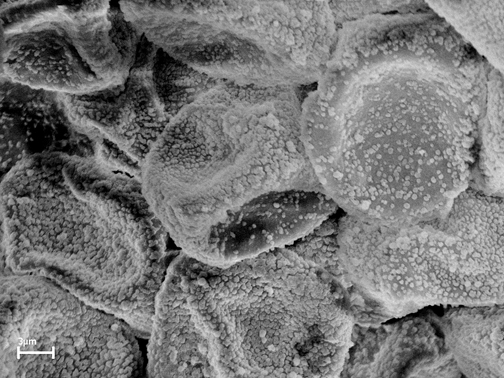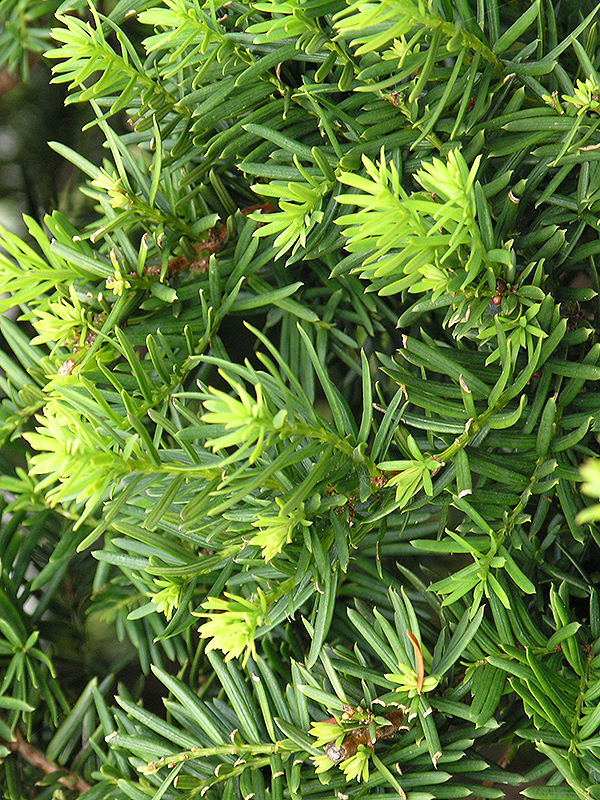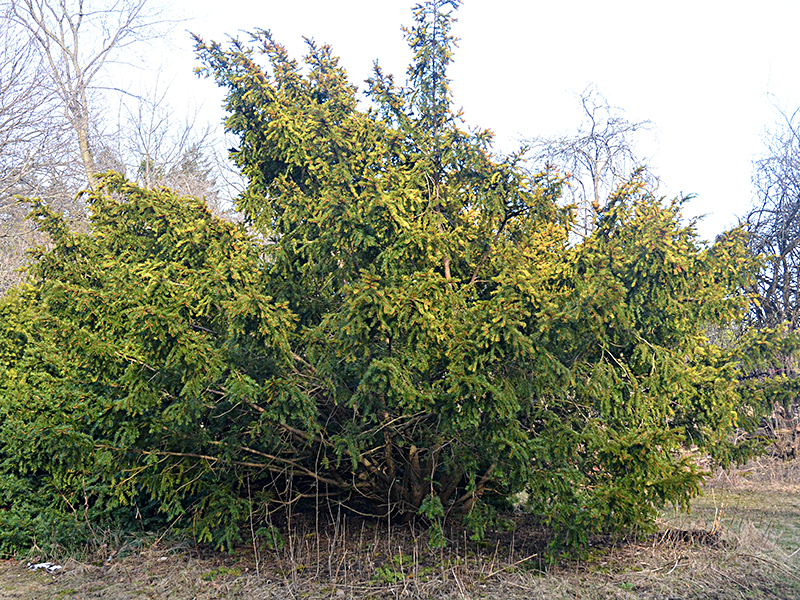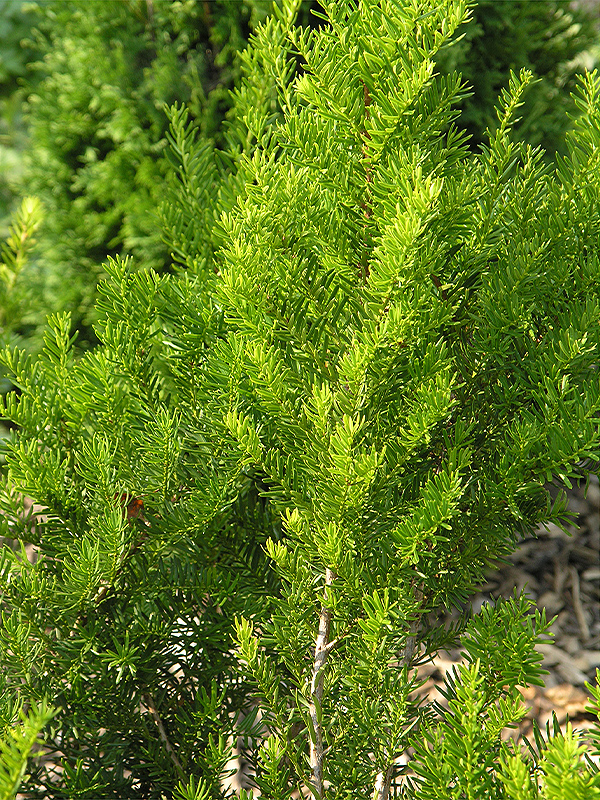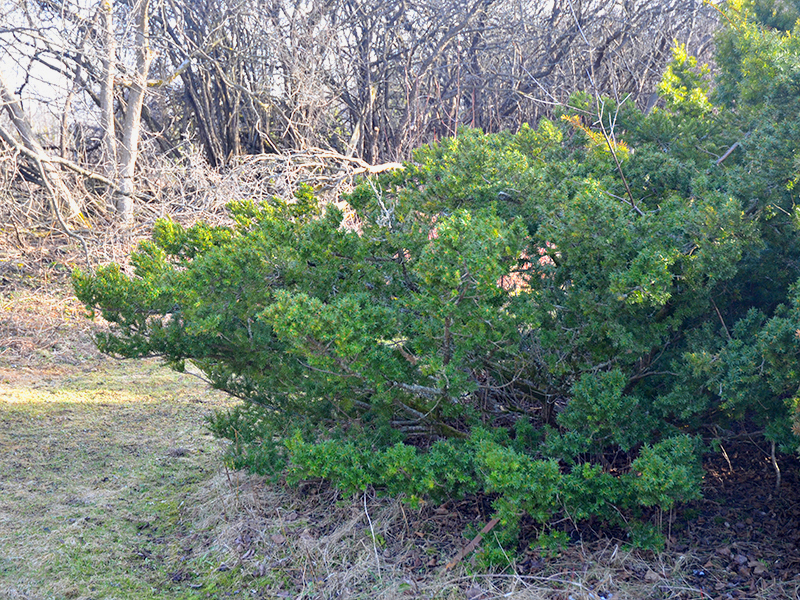
Woody > Taxus > Taxus cuspidata > Taxus cuspidata
Taxus cuspidata
Japanese Yew
Origin: Introduced into cultivation in 1853.
Mike's
Opinion


"
An attractive evergreen with shiny green foliage. Pruning and shearing these evergreens gives it limitless landscape uses. It should not be planted where water may stand, even for a short time since it is intolerant of wet feet. It is slow growing and it quite long lived.
Michael Pascoe, NDP., ODH., CLT., MSc. (Plant Conservation)
"
| Family |
| Taxaceae |
| Genus |
| Taxus |
| Species |
| cuspidata |
| Category |
| Woody |
| Type |
| Shrub (evergreen) |
| Pronunciation |
| USDA Hardiness Zone |
| 4 - 7 |
| Canadian Hardiness Zone |
| 3b - 6a |
| RHS Hardiness Zone |
| H7 |
| Temperature (°C) |
| -35 -(-28) |
| Temperature (°F) |
| -30-(-20) |
| Height |
| 2-10 m |
| Spread |
| 2-10 m |
Photographs
Description and Growing Information
Flowering Period
| General Description |
| A small tree with distinct bark. Can be grown (trained) into many different shapes and forms. it has straight or curved needles and is single or a multi-stemmed shrub. |
| Landscape |
| Pruning the evergreen in different ways gives it many landscape purposes such as topiary and hedges. |
| Cultivation |
| Transplants well as a balled-and-burlaped or field dug plant. Prefers moist soils, usually sand, but can adapt. The soil must be well drained to keep the roots from drowning as it is intolerant of wet soils. |
| Shape |
| Flat-topped to pyramidal. |
| Growth |
| Slow |
| ID Characteristic |
| Exfoliating reddish brown bark. Red arial covering the seed. |
| Pests |
| None of note. |
| Habitat |
| Found in the mountains throughout Japan and Korea. |
| Bark/Stem Description |
| Beautiful reddish, brown bark that exfoliates in scales. |
| Flower/Leaf Bud Description |
| Buds are brown in colour and are ovoid-oblong in shape. |
| Leaf Description |
| Needle like foliage. Dull green colour on upper side and paler on the underside of the needles. Two-ranked needles are not distinctive and are short-stalked to about 1-3 cm long. |
| Flower Description |
| Dioecious, forms on previous years wood; ornamentally unimportant. |
| Fruit Description |
| A semi- attractive red arial covering a hard olive coloured seed. |
| Colour Description |
| Dark green on top of the needles, yellowish-green on the bottom. Some winter yellowing can occur. |
| Texture Description |
| Medium texture, sharply pointed waxy feeling needles. |
| Notable Specimens |
| University of Toronto, Toronto, Ontario, Canada. The University of Western Ontario, London, Ontario, Canada. |
| Propagation |
| Propagated by hardwood cuttings. |
 copy.jpg)
